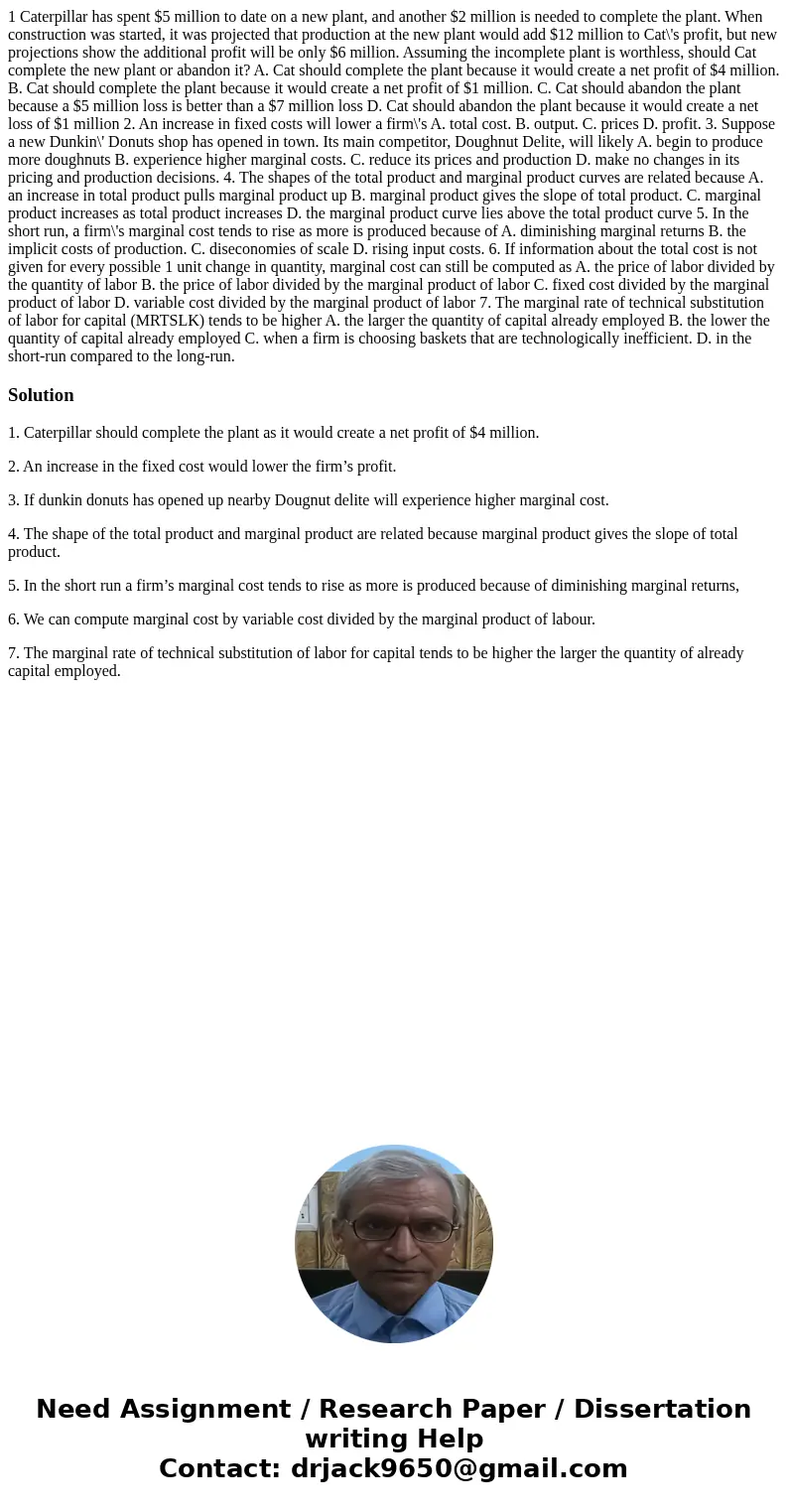1 Caterpillar has spent 5 million to date on a new plant and
1 Caterpillar has spent $5 million to date on a new plant, and another $2 million is needed to complete the plant. When construction was started, it was projected that production at the new plant would add $12 million to Cat\'s profit, but new projections show the additional profit will be only $6 million. Assuming the incomplete plant is worthless, should Cat complete the new plant or abandon it? A. Cat should complete the plant because it would create a net profit of $4 million. B. Cat should complete the plant because it would create a net profit of $1 million. C. Cat should abandon the plant because a $5 million loss is better than a $7 million loss D. Cat should abandon the plant because it would create a net loss of $1 million 2. An increase in fixed costs will lower a firm\'s A. total cost. B. output. C. prices D. profit. 3. Suppose a new Dunkin\' Donuts shop has opened in town. Its main competitor, Doughnut Delite, will likely A. begin to produce more doughnuts B. experience higher marginal costs. C. reduce its prices and production D. make no changes in its pricing and production decisions. 4. The shapes of the total product and marginal product curves are related because A. an increase in total product pulls marginal product up B. marginal product gives the slope of total product. C. marginal product increases as total product increases D. the marginal product curve lies above the total product curve 5. In the short run, a firm\'s marginal cost tends to rise as more is produced because of A. diminishing marginal returns B. the implicit costs of production. C. diseconomies of scale D. rising input costs. 6. If information about the total cost is not given for every possible 1 unit change in quantity, marginal cost can still be computed as A. the price of labor divided by the quantity of labor B. the price of labor divided by the marginal product of labor C. fixed cost divided by the marginal product of labor D. variable cost divided by the marginal product of labor 7. The marginal rate of technical substitution of labor for capital (MRTSLK) tends to be higher A. the larger the quantity of capital already employed B. the lower the quantity of capital already employed C. when a firm is choosing baskets that are technologically inefficient. D. in the short-run compared to the long-run. 
Solution
1. Caterpillar should complete the plant as it would create a net profit of $4 million.
2. An increase in the fixed cost would lower the firm’s profit.
3. If dunkin donuts has opened up nearby Dougnut delite will experience higher marginal cost.
4. The shape of the total product and marginal product are related because marginal product gives the slope of total product.
5. In the short run a firm’s marginal cost tends to rise as more is produced because of diminishing marginal returns,
6. We can compute marginal cost by variable cost divided by the marginal product of labour.
7. The marginal rate of technical substitution of labor for capital tends to be higher the larger the quantity of already capital employed.

 Homework Sourse
Homework Sourse